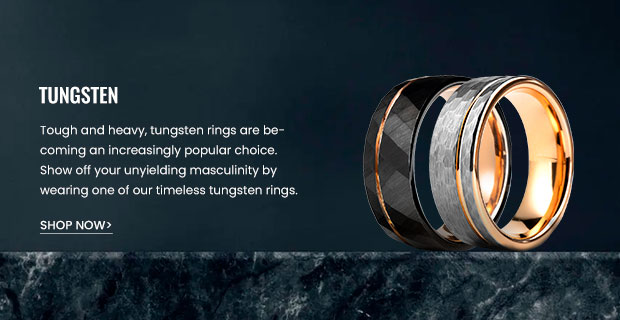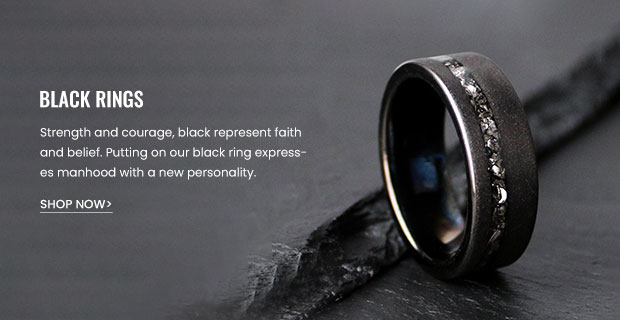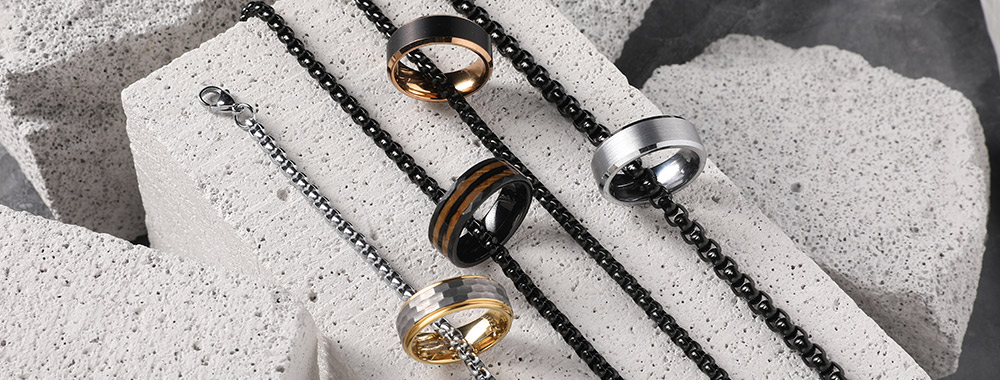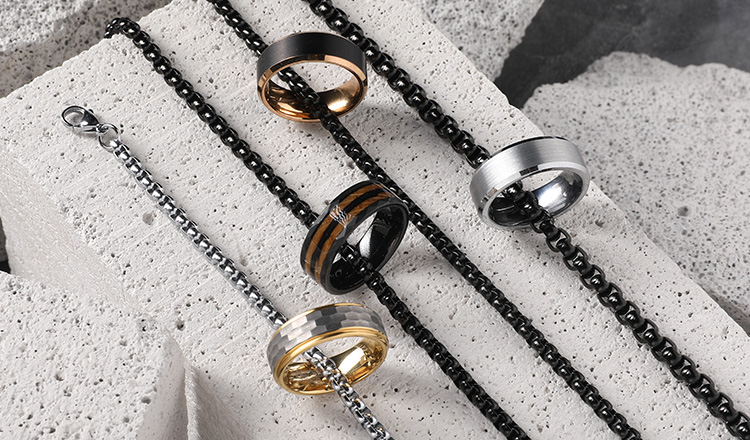We’ve all been there at some point – a favorite ring that once slid on with ease now refuses to budge. It’s not only uncomfortable but can also cause concern for your circulatory health. Addressing the issue of tight rings promptly is vital to ensure both comfort and well-being. This guide aims to find out the reasons, signs, and solutions related to tight rings, thus you can wear rings without considerations.
Why Your Rings Get Tight
Natural Changes in Finger Size
- Daily fluctuations due to temperature and humidity: Heat can cause your fingers to expand slightly, while cold weather might make them a bit slimmer. It’s not uncommon to find that a ring that fits perfectly during a cool morning feels snug by the end of a warm afternoon.
- Weight gain or loss: Gaining or losing weight is a common experience for many of us, and even a slight change can affect the size of our fingers.
- Aging on joint sizes: As we age, our joints and skin also evolve, which can impact how our rings fit.
Incorrect Ring Sizing
While it may seem straightforward to use an online guide or a piece of string at home, nothing beats having a jeweler take your measurements. Plus, it’s worth remembering that just as seasons change, so does our finger size. Our fingers tend to swell in warmer months and may shrink in cooler times. So, if you’re getting sized for a ring in the winter, remember that it may feel tighter once summer arrives.
Potential Health Concerns
- Swelling from medical conditions: Sometimes, swelling in the hands and fingers can be linked to various conditions such as arthritis or diabetes. If joints become stiffer or change in shape due to arthritis, the fit of a ring can become uncomfortably tight. In diabetes, fluctuating blood sugar levels can lead to water retention, which might make your rings feel snugger.
- Temporary swelling from injury or activity: Injuries, too, can cause swelling. Maybe you sprained your finger playing basketball or strained it while moving furniture. And let’s not forget about everyday activities. Ever notice how your hands feel after a long walk or run? Physical activity gets your blood pumping and can temporarily increase the size of your fingers.
8 Signs That the Rings Get Too Tight
Difficult Removal
If it’s a struggle to take off your ring, and you find yourself repeatedly tugging or twisting to get it over your knuckle, it’s a sign that the ring is too small.
Persistent Indentation
Once you remove the ring, if there’s a deep indentation that lingers for an extended period, it indicates that the ring is applying too much pressure on your skin.
Discoloration of Skin
Look out for any discoloration (redness or bluish tint) beneath the ring. This could suggest that the circulation is being affected due to the tightness of the ring.
Swelling
Swelling of the finger either directly under the ring or beyond it towards the fingertip is a tell-tale sign that the ring is constraining normal blood flow or lymphatic drainage.
Pain or Numbness
Any pain, tingling, or numbness in the finger wearing the ring, or in the fingers adjacent, suggests that nerves may be compressed due to the tight fit.
Difficulty in Bending the Finger
A properly fitting ring will allow you to bend your finger comfortably. If the ring restricts this movement, it’s too tight.
Skin Issues
Keep an eye out for any skin irritation, such as redness, rashes, or blistering, which could result from excessive rubbing or pressure from a tight ring.
Cold Fingers
If the finger wearing the ring or those around it often feel unusually cold, this might be a symptom of compromised blood flow due to the tightness of the ring.
How to Prevent a Tight Ring?

Get Properly Sized
Visiting a jeweler for professional sizing is the best way to ensure a perfect fit. As our bodies change over time, it is also wise to consider periodic resizing if you go through significant weight changes.
Account for Size Fluctuations
Your finger’s circumference isn’t static – it changes throughout the day and across seasons. To find the most comfortable fit, measure your finger at different times, especially when your body temperature is at its average
Consider Band Width
The band’s width influences its fit. Wider bands have less give, feeling tighter on your finger compared to narrower ones. When choosing a wider band, you might need to go a half-size up to ensure it will fit over your knuckle without squeezing too tightly at the base of your finger.
Monitor Weight Changes
If you’re on a fitness journey or experiencing life events that affect your weight, keep an eye on how your ring fits. Adjusting your ring size after significant weight loss or gain will help maintain both the ring’s comfort and integrity.
Be Aware of Salt Intake
High sodium intake can lead to water retention and, consequently, finger swelling. Pay attention to your diet to mitigate such effects.
Manage Health Conditions
Maintain regular communication with healthcare providers about the condition of your health, especially if you have swelling-related issues that may affect how your rings fit.
Remove Rings Regularly
Make it a part of your daily routine to remove your rings at night. This habit prevents potential issues like “ring avulsion,” where a ring gets caught on something and can seriously injure the finger. Taking your rings off before exercise or manual labor is also a good practice, as these activities can lead to temporary swelling.
Use Preventive Products
Ring adjusters or guards are excellent short-term solutions during periods of minor swelling, providing a buffer that makes your ring temporarily snugger without the commitment of resizing.
Get a New Ring
Finally, if you find that the material of your ring is difficult to resize and you notice signs that it needs to be replaced, such as a deformed band, it’s best to get a new ring. Remember to use a ring sizer to measure your finger again to ensure the new ring fits perfectly.
8 Tips to Remove a Tight Ring Easily
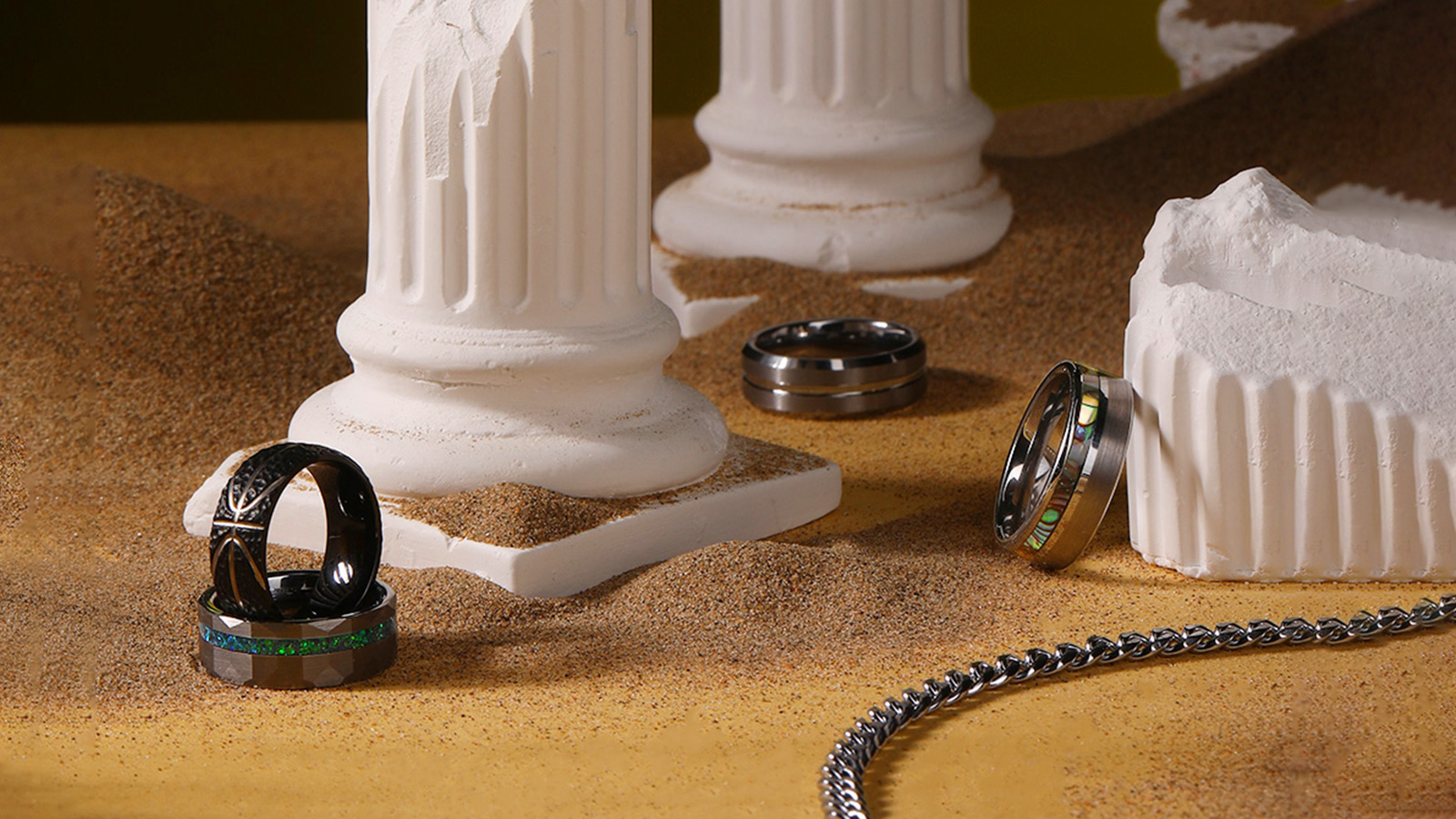
Lubrication Method
A bit of soap, lotion, or oil can serve as an effective lubricant to help slide off a stubborn ring. Just apply around the ring area, twist gently, and pull.
Cold Water Immersion
Dip your hand in cold water to reduce swelling. After drying, try removing the ring quickly before your finger warms up and swells again.
Dental Floss or String Technique
This method involves wrapping dental floss or string around the finger above the ring to compress the skin and then sliding the ring over the wrapped portion.
Elevation and Ice
Elevating your hand and applying ice can effectively reduce swelling. Once the swelling has gone down, attempt to remove the ring.
Sliding with Plastic Wrap
Compressing the finger with plastic wrap can create a smooth surface to slide the ring over.
Windex Spray (Emergency Trick)
As a lubricant, a spritz of Windex can sometimes do the trick. Jewelers often use this method in emergencies, but be sure to wash your hands thoroughly afterward.
Medical Tape Compression
Wrapping the finger with medical tape can help to reduce swelling. After some time, remove the tape and attempt the ring removal.
Professional Assistance
If your ring simply won’t come off, it’s time to seek assistance from a jeweler or a medical professional, especially if it’s causing pain or restricting blood flow.
Conclusion
Ensuring a proper ring fit is not just a matter of comfort; it’s also an important aspect of maintaining good hand health. Taking proactive steps to avoid and address tight rings can save you a great deal of discomfort and worry. It’s always better to act sooner rather than later when dealing with a ring that’s too tight.

